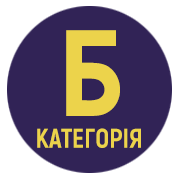REGIONAL ASPECTS OF EDUCATION FOR CHILDREN WITH HEARING DISABILITIES: HISTORY AND PRESENT
DOI:
https://doi.org/10.32782/ped-uzhnu/2024-3-5Keywords:
children with hearing impairments, education for deaf children, special school, hearing disabilities, special education in Transcarpathia.Abstract
The article dwells upon the history of the establishment and further functioning of schools for children with hearing impairment in Transcarpathia. Research methods: theoretical – analysis, comparison and generalization of information from scientific and pedagogical publications and Internet resources, synthesis of research results. The purpose of the study was to summarize information concerning certain aspects of schools work for children with hearing impairment in Transcarpathia, to analyze their possibilities in order to conduct corrective work and socialize pupils. Joint efforts of central and local authorities and public organizations’ assistance played an important role at the initial stage of school establishment for children with hearing impairments in Uzhhorod city. This school not only conducted a certain auditory and linguistic work with students, provided primary education, but also facilitated certain professional skills like socialization of pupils. Substantive professional help concerning auditory perception disorders remedy has been provided since soviet period, when deaf teachers began their pedagogical work, and school classrooms were equipped with sound-amplifying equipment. A significant contribution to the process of preparing school graduates for independent life has been achieved due to active extracurricular life of students like participation in sports sections, creative exhibitions and festivals. Establishment of another school for children with hearing impairment in Khust, Transcarpathia region, promoted differentiation of these institutions into schools for the deaf and hearing impairment. Steady and successful work of both special schools in the region testifies equal access to quality education for children with hearing impairment. Further development of these educational institutions can be achieved by active use of information and computer technologies in educational and remedy processes, improving the professional skills of teachers, amplifying educational work with students thus forming a responsible citizen of their state.
References
Гомоннай В.В., Росул В.В., Талапканич М.І. Школа та освіта Закарпаття. Ужгород: Госпрозрахунковий редакційно-видавничий відділ Закарпатського комітету у справах преси та інформації, 1997. 248 с.
Золоті сторінки історії школи. URL: http://www.specdeef.uz.ua/school
Історія Хустської спеціальної школи-інтернату І–ІІІ ступенів. URL: https://khust-internat.at.ua/index/istorija_khustskoji_specialnoji_zagalnoosvitnoji_shkoli_internat_i_iii_stupeniv/0-6
Колишкін О.В. Вступ до спеціальності «Корекційна освіта»: навч.посіб. О.В. Колишкін. – Суми: Університетська книга, 2015. – 392 с.
Нариси історії Закарпаття. Том 1 (з найдавніших часів до 1918 року). – Ужгород: Госпрозрахунковий редакційно-видавничий відділ Закарпатського комітету у справах преси та інформації, 1993. – 436 с.: 76 с. іл.
Нариси історії Закарпаття. Т. ІІ (1918–1945). Редакційна колегія І. Гранчак, Е. Балагурі, І. Грицак, В. Ілько, І. Поп: історія. – Ужгород: видавництво «Закарпаття», 1995. – 663 с.
Шевченко В.М. Розвиток спеціальної освіти для дітей з порушеннями слуху в Україні (ХІХ– початок ХХ ст.). URL: https://enpuir.npu.edu.ua/handle/123456789/22008






